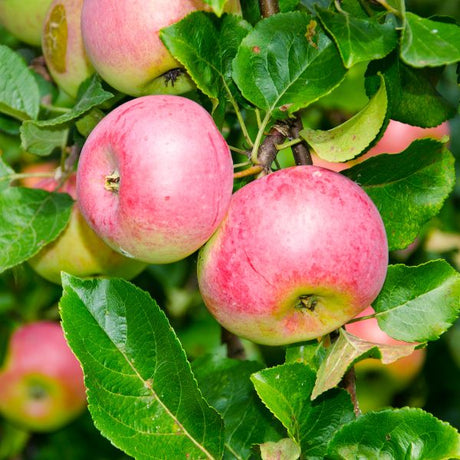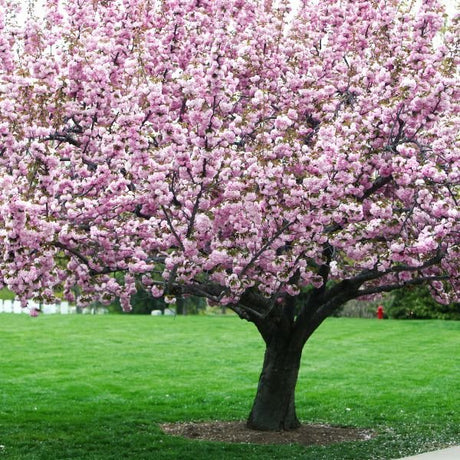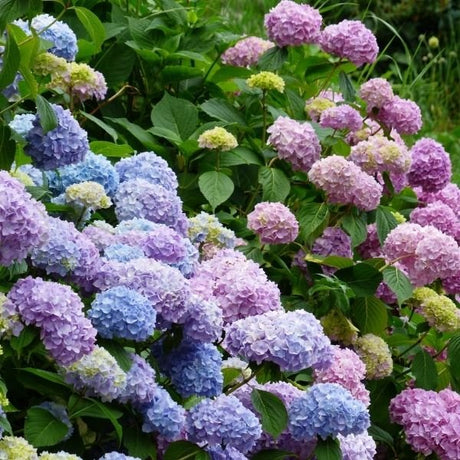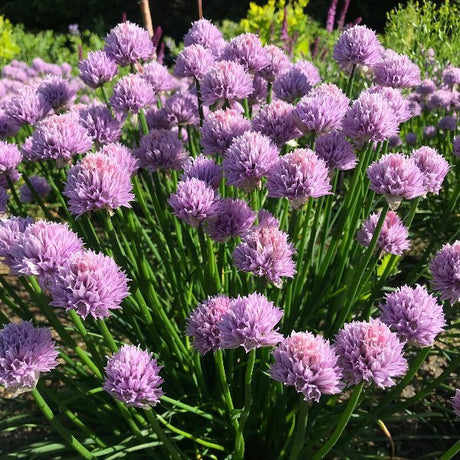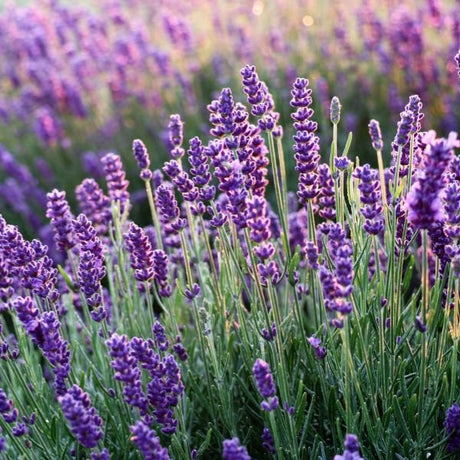American Persimmon Tree
Diospyros virginiana
- Stay Protected with Plant Sentry ™
American Persimmon Tree - #1 Container 3-4 Feet is backordered and will ship as soon as it is back in stock.
Plant Sentry™
Plant Sentry™

Plant Sentry™ Protected
Your order is protected by our compliance system that:
- Prevents restricted plants from shipping to your state
- Ensures plants meet your state's agricultural requirements
- Protects gardens from invasive pests and diseases
Delivery and Shipping
Delivery and Shipping
Delivery and Shipping
Fast, Safe Plant Delivery
Ships in 3-4 business days • Tracking provided • Weather protected
| Under $50 | $9.99 |
| $50 - $99.99 | $14.99 |
| $100 - $149.99 | $16.99 |
| $150+ | $24.99 |
✓ Zone-specific timing • ✓ Professional packaging • ✓ Health guarantee
Understanding Plant Options
Nature Hills offers plants in two main formats:
- Container Plants: Grown in pots with soil, sized by container volume and plant age
- Bare Root Plants: Dormant plants without soil, sized by height measurements
Container Plant Sizes
Container sizes indicate plant age and growing capacity rather than liquid volume equivalents. Our containers follow industry-standard nursery "trade gallon" specifications, which differ from standard liquid gallon measurements.
Young Plants (6 months to 18 months old)
| Container Size | Actual Volume | Metric Equivalent |
|---|---|---|
| 2" x 2" x 3" | 0.18 - 0.21 dry quarts | 0.20 - 0.23 dry liters |
| 4" Container | 0.31 - 0.87 dry quarts | 0.35 - 0.96 dry liters |
| 4.5" Container | 0.65 dry quarts | 0.72 dry liters |
| 6" Container | 1.4 dry quarts | 1.59 dry liters |
| 1 Quart | 1 dry quart | 1.1 dry liters |
| 5.5" Container | 1.89 dry quarts | 2.08 dry liters |
Established Plants (18 months to 2.5 years old)
| Container Size | Actual Volume | Metric Equivalent |
|---|---|---|
| 2 Quart | 2 dry quarts | 2.2 dry liters |
| #1 Container | 2.26 - 3.73 dry quarts | 2.49 - 4.11 dry liters |
| 5" x 5" x 12" | 3.5 - 4.3 dry quarts | 3.85 - 4.74 dry liters |
Mature Plants (2-4 years old)
| Container Size | Actual Volume | Metric Equivalent |
|---|---|---|
| #2 Container | 1.19 - 1.76 dry gallons | 5.24 - 7.75 dry liters |
| #3 Container | 2.15 - 2.76 dry gallons | 8.14 - 12.16 dry liters |
Large Plants (3-5 years old)
| Container Size | Actual Volume | Metric Equivalent |
|---|---|---|
| #5 Container | 2.92 - 4.62 dry gallons | 12.86 - 20.35 dry liters |
| #6 Container | 5.25 - 6.01 dry gallons | 23.12 - 26.42 dry liters |
| #7 Container | 5.98 - 6.53 dry gallons | 26.34 - 28.76 dry liters |
Bare Root Plants
Bare root plants are sold by height from the root system to the top of the plant. Plants may exceed minimum height requirements.
Common Sizes:
- Trees: 1 foot, 2 feet, 3 feet, 4 feet, 5 feet, 6 feet
- Shrubs & Perennials: 1 foot, 18 inches, 2 feet
Important Notes
Container Volume Specifications
- Trade Gallon Standard: Our containers follow industry-standard "trade gallon" specifications established by the American National Standards Institute (ANSI Z60.1) for nursery stock
- Volume Variations: Actual soil volume may vary due to plant root systems and growing medium settlement
- Age Indicators: Container size primarily indicates plant age and maturity rather than liquid volume equivalents
Growing Conditions
- Plant size can vary based on variety and growing conditions
- Container size helps indicate plant maturity and establishment level
- Larger containers generally mean more established root systems and faster landscape establishment
Seasonal Availability
- Bare root plants are available seasonally when dormant
- Container plants are available throughout the growing season
- Specific varieties may have limited availability in certain sizes
Questions?
For questions about specific plant sizes or availability, please contact our plant experts who can help you choose the right size for your landscape needs.
Plant Highlights
American Persimmon Tree highlights at a glance!
-
Brand
-
Botanical Name
-
Mature Height
-
Mature Spread
-
Sun ExposureFull Sun
-
Moisture
-
Soil
-
Growth RateMedium
-
Fall Color
-
Pollinator Required
-
Pruning Time
-
Bloom PeriodLate Spring
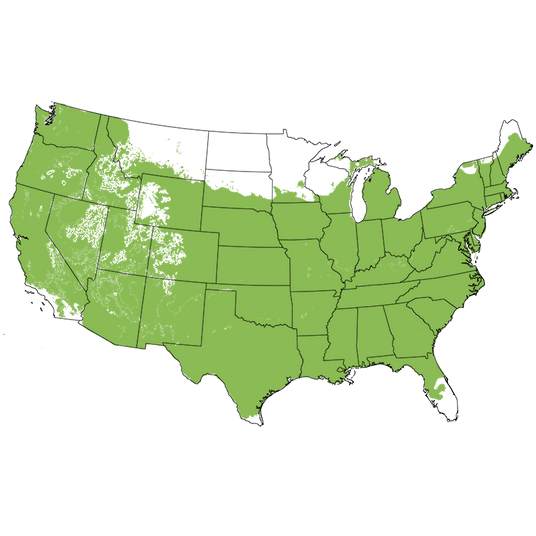
Growing Zones
People across America are searching for native trees that bear healthy fruit and bring an exotic flair to their yards. Enjoyed for many thousands of years by the Native Americans for fresh eating, as well as a cooked and dried food staple, the American Persimmon (Diospyros virginiana) is coming back into vogue.
The Persimmon offers ornamental bark, wonderfully robust foliage, tremendous fall color, and delicious edible fruit on an easy-care plant. What's not to love? People are really starting to value our native trees and discovering the thrill of growing their food. What a joy to have a plant that gives you food!
American Persimmon trees look great all year! Nature Hills is seeing a huge trend in home gardening called edible landscaping. It's the idea of mixing fruit and vegetable plants in with your ornamental perennials and flowers.
Cousins to the Asian Persimmon, American Persimmon trees produce round fruit that starts green, then turns to orange, deep red, or even soft purple. Ripe fruit has a uniquely sweet but nutty flavor. With a soft texture, American Persimmon fruit has been baked into puddings and pies for many centuries.
Persimmon fruits are low in calories and fat, but high in fiber, vitamins, and other nutrients. The fruit is commonly eaten fresh off the tree where it will hang until after the leaves drop. The fruit is also used in making breads and puddings as well as ice cream, syrups, and Persimmon pies.
From the brilliant bright green leaves of spring to the wonderful mixed red and orange fall colors, the American Persimmon has a ornamental display value in a naturalized landscape. When they've gone dormant even the bark is pretty! The bark is thick dark gray and corky, broken into even rectangular blocks. You'll love the very distinctive look in winter.
Planting and Application:
Native Americans and the first European settlers immediately saw the value in this incredibly versatile plant. Few other plants offered so much as the American Persimmon. From food to medicine to tool making and dyes, the American Persimmon could provide like no other native plant.
Today, its value is both edible and ornamental. We no longer make tools or golf club heads from the wood, nor dyes from the bark or a coffee-like drink from the dried ground seeds.
In the wild, mature trees typically grow as a thicket. Try recreating this natural look by planting several trees together in a pretty grouping. This is an outstanding plant to adorn the back of the garden or to help anchor a border in the landscape. They love full sun and look great in a mixed border or hedgerow.
One thing is for sure. You'll ALWAYS have something to talk about with your guests who are new to your garden when you plant a heritage tree like this one. You’ll also love the other four-legged and feathered willdife guests that will be stopping by!
- Red to Yellow to Purple Fruit
- Astringent Unripe Fruit
- Sweet, Delicious, Soft Textured Nutty Flavored When Ripe
- Beautiful Native Fruit Tree
- Lovely Fall Color
- Ornamental Bark & Branching
- Four Season Tree, Specimens, Backyard Orchards, Thickets & Mixed Hedges
#ProPlantTips for Care:
American Persimmons need full sun, and are widely adaptable and grow in a wide range of soil types. They prefer moist, sandy locations with well-drained soil. They are drought tolerant in dry locations once established. Plant with Nature Hills Root Booster for lifelong symbiotic support of the root system. Although some flowers may be perfect, most plants have separate male and female trees (dioecious). We suggest you plant at least two (or more) to increase pollination chances. A 3-4 inch thick layer of arborist mulch boosts the health of the tree as does a regular amount of acid-loving plant fertilizer.
Easy to grow, American Persimmon does require cross-pollination. The unripe fruit is astringent and is best after it's soft and fully ripe in fall. You can also pick unripe fruit after it takes on its fall color. You'll then let it fully ripen to soft for the best flavor. You'll then let it fully ripen to soft for the best flavor. These plants have no serious insect or disease problems and the plant requires very little maintenance beyond a late winter/early spring pruning.
- Full Sun
- Enriched Well-Drained Soil
- Moderate to Low Moisture Needs
- Prune When Dormant - Late Winter/Early Spring
- Appreciates Mulched Beds & Regular Fertilizer
- Low Chill Hour Needs
Don't miss this chance to own a piece of American history! The American Persimmon is a lovely ornamental that also gives us outstanding fall fruit. Quite simply, this tree is an attractive option with many benefits. Don't miss having one of these in your garden this year!









